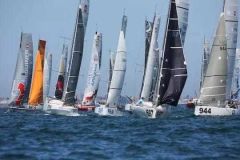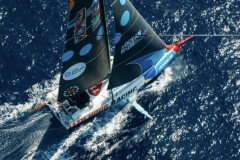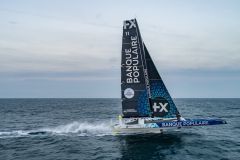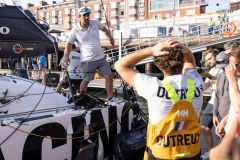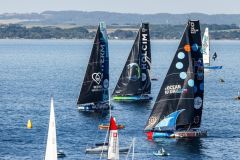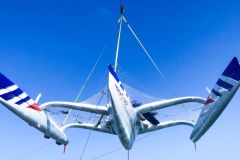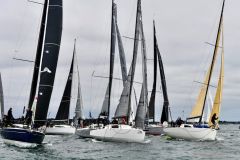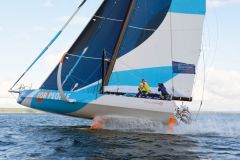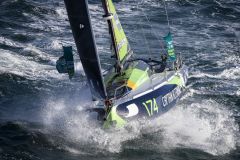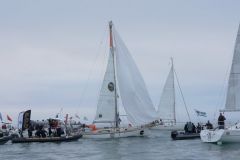The next Volvo Ocean Race will start in October 2017 from Alicante and end in The Hague, Netherlands, eight months later, stopping in a total of 11 cities around the world. So we'll have to wait a little longer to see the Volvo Ocean 65 crews racing around the world! But the race organization is making news by announcing a series of 10 new features, which will be added to the race schedule over the next two weeks.
Encourage women to participate in the ocean racing circuit
The first of them concerns the feminization of the crews. Indeed, the Volvo Ocean Race is revising an important race rule to open the event more widely to women and allow them to participate in the next edition. The race management now imposes a limit of 7 crew members for 100% male crews, one less than in 2014-2015. Mixed crews, for their part, will be able to welcome more members on board.

Here are the different possible combinations:
- 7 men
- 7 men + 1 or 2 women
- 7 women + 1 or 2 men
- 5 men + 5 women
- 11 women
Another novelty, the teams will be able to change the composition of their teams during the stopovers. But as in the previous editions, on the In-Port races, the crews will have to be the same as on the previous or following leg. An exception to the rule: a team composed of 7 men will be able to welcome one more woman during these In-Port races.
"Racing seven on a Volvo Ocean 65 against teams of eight or nine will be very difficult. So this new rule will almost force teams to enter women, which will create a great learning platform. For women to race at the same level as the best sailors in the world, they need to train and race with the best." said Ian Walker, winner of the 2014-15 Volvo Ocean Race and Olympic silver medalist.

A measure linked to Team SCA's success in the 2014-2015 Volvo Ocean Race
In the last edition, Team SCA was a 100% female team, composed of 11 women. They had demonstrated their talent as navigators by finishing 3rd in the world es of the In-Port race ranking. They were also the first crew in 25 years to win a leg. Unfortunately, their offshore performance was a bit sub-par, as they did not benefit from the experience of more experienced sailors.
"It's not about lowering the standard, as some people in our sport suggest. It's about giving the best women sailors in the world more opportunities to compete on a level playing field. It's about giving the best women sailors in the world more opportunities to race on equal terms. Sailing is one of the few sports where you can have mixed crews and we want to take advantage of that to reflect the growing desire to see more diversity in the corporate world, especially in the companies that support the teams today.
The Team SCA project in the last edition was able to restart the female participation in this race, after 12 years in which there was only one woman at sea (Adrienne Cahalan, Leg 1, 2005). We are determined to continue this momentum while ensuring that the Volvo Ocean Race will continue to feature the best sailors in the world, both male and female.
We use the crew rules to encourage skippers to put one or more women on board. I really hope that in the future there will be no need for any such rules. But today, it seems that this is the only way to evolve." said Mark Turner, Director of the Volvo Ocean Race.

Women in the Volvo Ocean Race since the beginning
The race, which has been running for 43 years, has always welcomed women sailors. More than 100 women have participated in the Volvo Ocean Race since its creation in 1973. In comparison, 2000 men have participated in the race!
This decision was particularly welcomed by many women sailors.
"This is great news for top female athletes, not just in sailing, but for sport in general. It was important to mark the occasion with a 100% women's team in the last edition, and change the way women are perceived in the sailing world. We showed that we can race on the same boats, in the same conditions. I'm very happy to see the concept of a mixed crew evolve. I really believe that there are enough women in sailing who are able to stand out and prove that they are capable and worthy of a place on board," said Dee Caffari, who raced on Team SCA in 2014-15 and who in 2006 became the first woman to complete a solo, non-stop round-the-world race "backwards." that is, from east to west.

But also by the men, and in particular Bruno Dubois, project manager for Dongfeng Race Team in the 2014-15 Volvo Ocean Race. "I have been sailing with women for years. In fact, the first major race I participated in was with women, in 1984 on the Quebec-St Malo. I then spent several years sailing with Ellen MacArthur and Dee Caffari. It was great and I always thought it was a good balance on a boat. I think it brings peace and a different way of looking at sailing. The funny thing is that men don't behave the same way if there are women on board. Since then, I've always tried to hire women in a man's environment, because they bring that little extra something that makes the team better."



